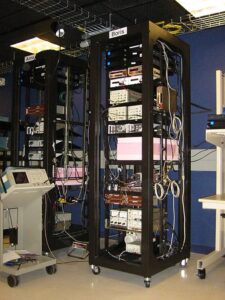The improvement of life quality is the main factor in the development of every new technology including fiber optic technology. Scientists from all over the world have always looked for new solutions for the prevention of seismic events, which is one of the most essential points in life quality improvement.
Seismic data of the previous years, electric sensors, fiber Bragg grating sensors, and modern distributed acoustic sensing have an aim to predict all catastrophes connected to earthquakes in the future. Especially, it concerns areas with high rates of population. More accurate monitoring gives an opportunity to reduce the risks resulting from most common natural events like earthquakes, landslides, eruptions, etc.

FBG sensors in the prediction of seismic events
In the past, the only approach to all the natural phenomena was the information about the cases. Then electric sensors were applied. However, usual electric sensors are hard to comply with the monitoring requirements of high sensitivity and long lifetime. That is why scientists have tried to use different FBG sensors. In fact, fiber Bragg grating temperature sensors were produced for better monitoring and observation of seismic activity. Except for fiber Bragg grating temperature sensors, there are FBG strain sensors that can be also applied for collecting data as geothermal monitoring.
In comparison with the usual electric sensors, FBG sensors can offer ease in signal transmission and immunity to electromagnetic interference that plays an important role. In fact, temperature monitoring with the help of the FBG is considered to be one of the most popular applications. Moreover, modern sensors can be sensitive to both strain and temperature.
Distributed Acoustic Sensing in earthquake prediction
If we speak of seismic activity and the prediction of seismic events, we should definitely mention another fiber optic technology that helps in geothermal monitoring called distributed acoustic sensing. DAS systems are widely applied in various spheres, including vibroacoustic monitoring of the oil wells.
Scientists have already held a number of experiments with the help of the distributed acoustic sensing studying seismic activity in different areas such as metropolitan, oceans, etc. The results prove that DAS systems are able to accurately detect vibrations even in conditions of a highly noisy environment and far away from the epicenter. That’s why this fiber optic technology draws the attention of many researchers and is popular where there is a need for precise and robust information. The DAS’s improved performance has shown its potential to be a powerful instrument in geophysics studies thanks to its bandwidth, waveform fidelity, cost-effectiveness, and simplicity.
Despite all the achievements in fiber optic technology, scientists still consider that DAS technology for seismic monitoring is still in its infancy. However, they are sure that such promising opportunities will play a crucial role in the next seismic networks.
Optromix is a DAS system manufacturer that provides top-of-the-line distributed acoustic sensing systems suitable for monitoring commerce networks. If you have any questions or would like to buy a DAS system, please contact us at info@optromix.com


 Nowadays cases, when people meet polar bears, have dramatically increased especially in arctic areas because the environment continues rapidly transforming. Thus, there is a need for a
Nowadays cases, when people meet polar bears, have dramatically increased especially in arctic areas because the environment continues rapidly transforming. Thus, there is a need for a  Quantum-enhanced metrology is regarded as a popular area of research for years because of its promising applications, varying from atomic clocks to biological imaging. According to the researches, a non-standard
Quantum-enhanced metrology is regarded as a popular area of research for years because of its promising applications, varying from atomic clocks to biological imaging. According to the researches, a non-standard  Nowadays
Nowadays